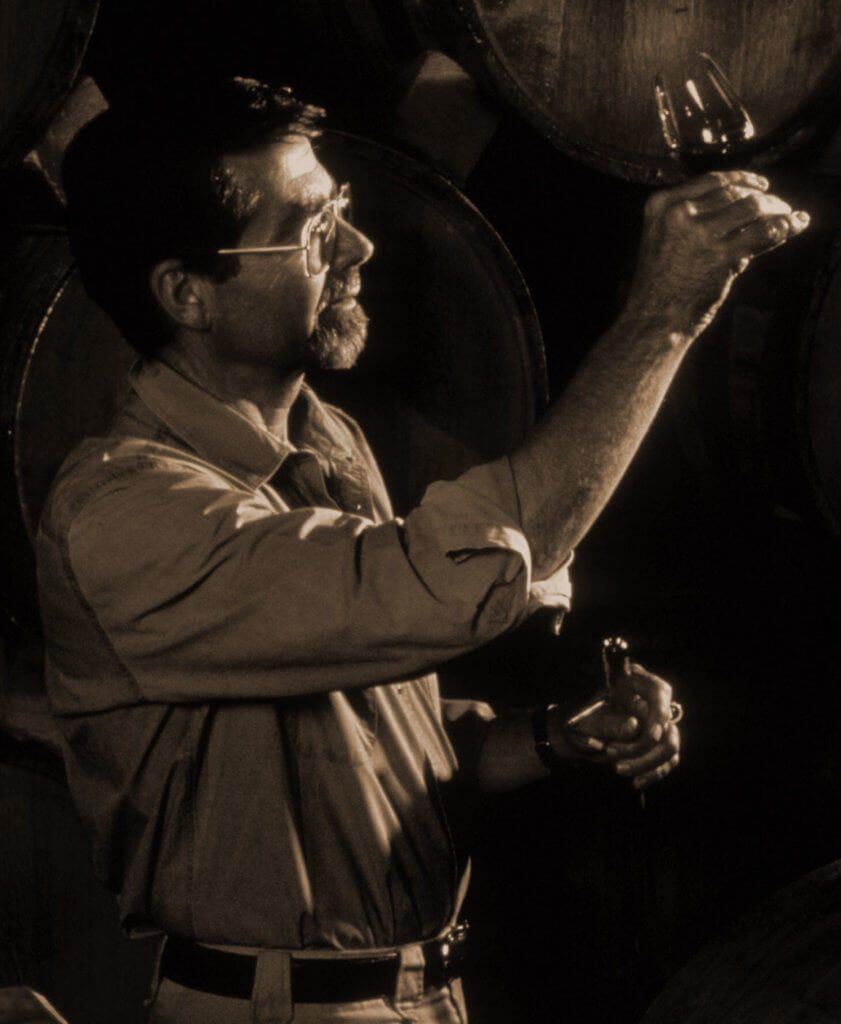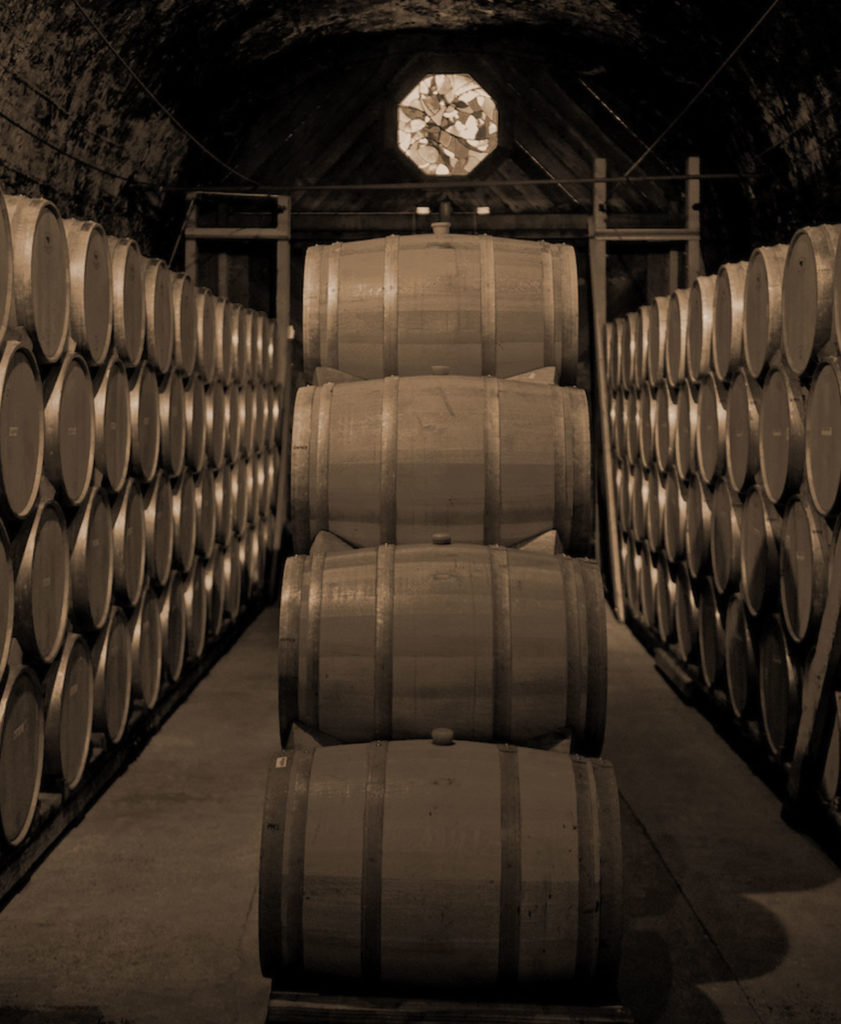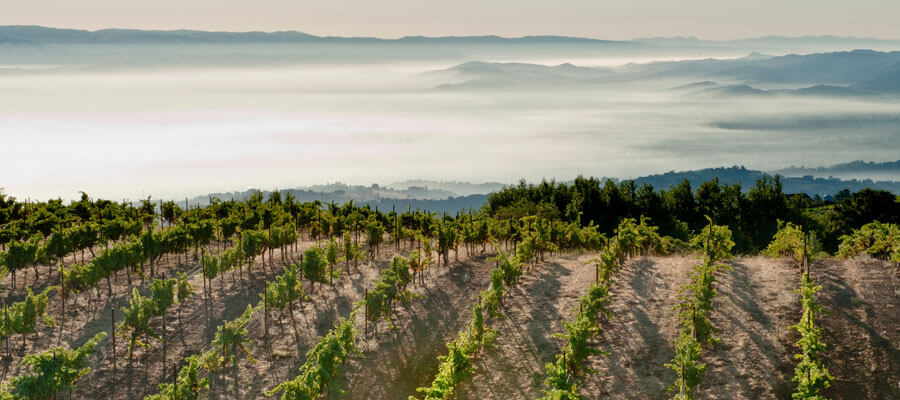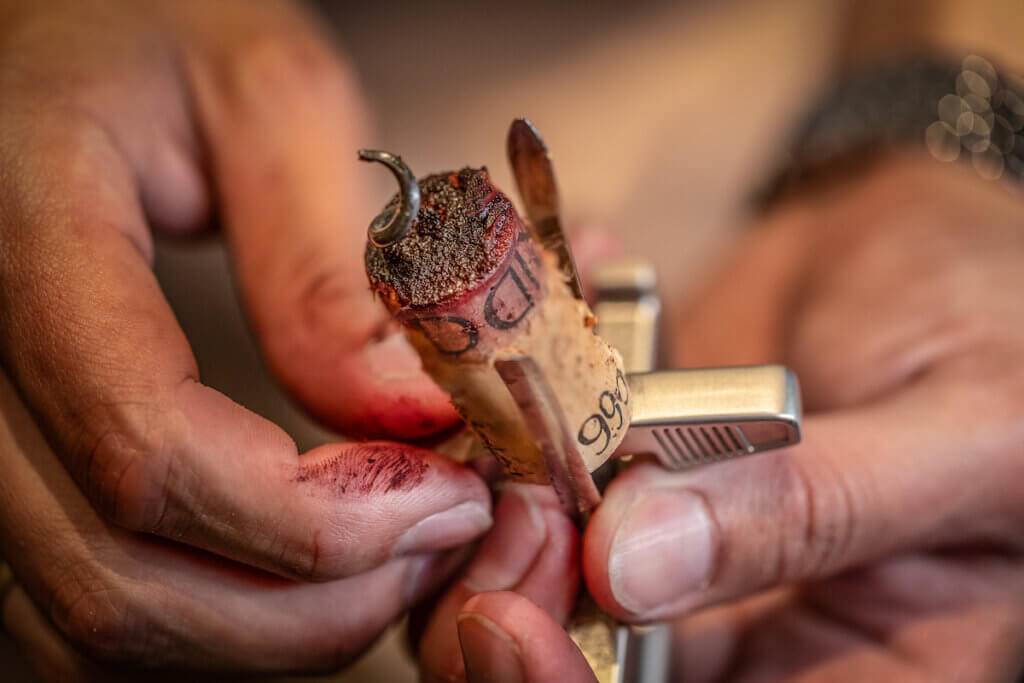A Comprehensive Guide to Wine Ageing
Blog Post
Here at RIDGE, we’ve been making wines built for long-term ageing since our first vintage of Monte Bello in 1962. While not all wines are produced (or suitable) for decades in the cellar, there are certain factors that assist with graceful ageing that are helpful to know before you tuck your bottles away. In this guide, we’ll go over what makes a wine age-able, what happens to wine as it ages, and which RIDGE wines benefit from prolonged ageing vs which wines are meant to drink young. All things wine ageing, here we go!
What makes a wine age-able?
Balance is the most critical factor. It is important that the key elements of wine – the fruit, the acid, the tannin and the body – are all in balance and harmony. If one of these elements is overly present, the wine will likely not age as well. Wines with greater depth and intensity usually reward longer ageing periods. However, certain more elegant wines can also improve with ageing depending on the varietal and care with which the wine is made.
What’s the most age-able wine varietal that RIDGE produces?
For us, it’s cabernet sauvignon and petite sirah. But varietal is only one component influencing a wine’s ability to age. It must be matched to the right soil, micro-climate, and quality-driven farming/winemaking.
Why does Monte Bello age so well?
There are three main factors all working in conjunction at our Monte Bello Estate that create balanced wines with great aging potential:
1. Soils
Fractured limestone with Franciscan greenstone topsoil is what brings a minerality to the wines. This minerality contributes to the longevity of the wines.
2. Elevation of the Vineyard
Sitting between 1,100 to 2,650 feet above sea level creates unique growing conditions that affect the size of the berries and the thickness of the skins of the grapes, which in turn affects the tannin and phenolic structure of the wines. These tannins are what help the wines to age gracefully.
3. Proximity to the Pacific Ocean
The influence of the marine layer and coastal climate bring cool and moist conditions, which favor the development of natural acidity in the grapes. This acidity not only adds complexity to the wines but also helps to protect and preserve the wine over time.
What happens to wine as it ages in the barrel?
Most red wines need to be aged in oak for color and phenolic stability. Most red wines benefit from the influence of oak in the flavor and tannin profile as well. Oak integration happens over time based on the tightness of the wood grain. For example, a barrel made from a tree grown in a very cold forest will have a tighter grain than a barrel made from a tree grown in a warmer forest. Tight grain takes longer to impact the wine and wider grain will make a more immediate impact on the perception of tannin and oak. Choosing the right barrel for the right wine in the right vintage (cooler/warmer weather) will impact the finished wine in flavor, tannin profile and oak impact. Also, wood is porous, so the wine benefits from micro-oxidation throughout its lifecycle which is beneficial in allowing it to mature. Too much air can cause premature oxidation and not enough air can cause reduction.


What happens to wine as it ages in the bottle?
Our winemakers constantly taste the wine in barrel and determine the perfect moment to bottle it. Bottling is like snapping a photograph of the wine at the moment when we feel it has come together and has received enough oak influence. Once in bottle, the wine still has the benefit of slight breathability through the cork, which is porous and made from the bark of the cork tree. Most bottling lines sparge the bottles with inert gas such as nitrogen, which removes the air from the bottle when it is filled. Over time, tiny amounts of air entering through the cork help the wine age gracefully over an extended period of time.
What does an aged wine taste like compared to when it was young?
In a young wine, the fresh fruit flavors tend to dominate. Tannins can be a bit astringent when young and are often amplified by the acidity. Over time, the fruit flavors become more complex, with other non-fruit flavors becoming more apparent. As the tannins soften, they become more integrated with the rest of the wine, creating a sumptuous mouthfeel that the palate almost interprets as sweet. In short, it’s dessert without the sugar.
Why is there sediment in older bottles of wine?
Acid naturally present in wine is soluble at room temperature. But in a cool cellar, this acid precipitates and forms a sediment. This sediment is tasteless and actually a sign of a naturally produced wine. To avoid this sediment, a winery may subject the wine to near freezing temperatures, a process known as cold stabilization. RIDGE does not cold stabilize its wines.
Does the type of cork/closure impact how a wine ages?
Yes. Natural cork is best for wines that are intended for ageing. Natural cork is “breathable” because of the micro pores in the cork which allow oxygen to interact with the wine over a long period of time. This process helps a wine to evolve and become more complex. However, it is also why older wines start to lose their color and eventually become oxidized. Deciding when a wine has reached its peak in this ageing process is one of the most challenging issues that wine collectors have. When a screw cap, glass top, composite cork or rubber/plastic closure is used, this process is eliminated which creates a less complex wine and does not help a wine to evolve or age well. These closures are typically used for lighter style wines that are intended to be consumed at a young age.
What happens to cork/other closures over time in the bottle?
Over time, natural cork begins to break down and can become soft or spongy. This can be exacerbated if the cork does not hold a perfect seal in which the wine will run up the sides of the cork and can even leak out of the top. This causes rapid oxidation and makes the cork very weak. The quality of the cork is important to avoid this from happening. Alternative closures are more stable in terms of physical strength and longevity. However, wine quality may not be as complex.
Should you decant older wines?
Decanting a wine serves two purposes: separating an older wine from any sediment and aerating a younger wine. At RIDGE, we decant young Monte Bello less than ten years old to aerate and “open up” the wine well in advance of serving it. You may also enjoy the results of decanting our young zinfandels that are only one or two years old. Decanting older wines depends more on the specific wine; a lighter pinot at 15+ years old can be served un-decanted while an older Monte Bello will usually benefit from careful decanting.
How do I know when to open my RIDGE wines?
Knowing when to open your wines is often a matter of personal preference. Some people love the tertiary aromas and softer tannins in older wines, while others prefer fruit-driven wines with firm tannins. Whatever your preference, it’s nice to have a mix of ageable wines and wines that you can drink young in your collection. Below, you’ll find our quick reference guide on the age-ability of most RIDGE wines:
Long-term Agers
10+ years
- Monte Bello
- Estate Cabernet
- Lytton Springs
- Geyserville
- Petite Sirah
- Merlot
Medium-term Agers
5-8 years
- Robust zinfandels
- Syrah/Grenache
- Carignane
- Chardonnay
- Pinot Noir
Wines to Drink Young
Less than 1 year
- Rosé
- Alder Springs
- Valdiguié
- Grenache Blanc
More on Wine Ageing…
- What’s the best way to store your wine at home?
- Large Format Bottles and Ageability
- Vintage Trackers: A vintage-by-vintage resource for when to open the most ageable RIDGE wines.
Wait!
In order to qualify for user related discounts, you must log in before proceeding with checkout. Click the button below to log in and receive these benefits, or close the window to continue.
Log In
